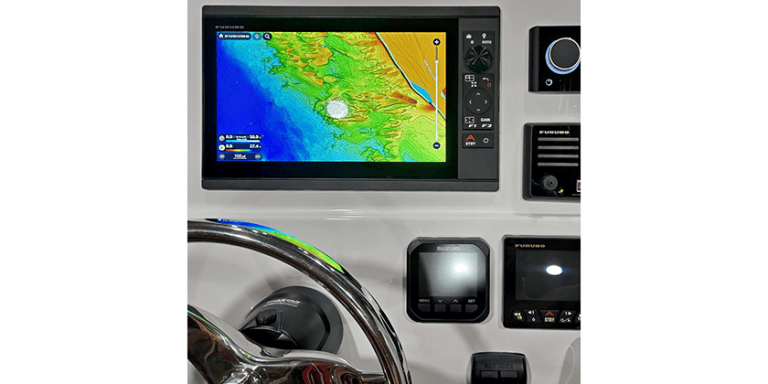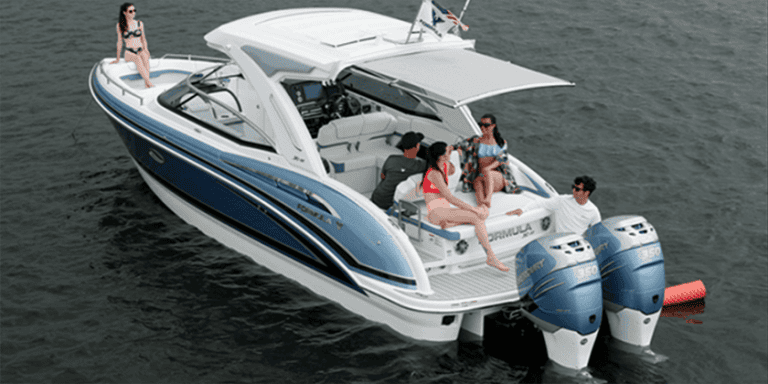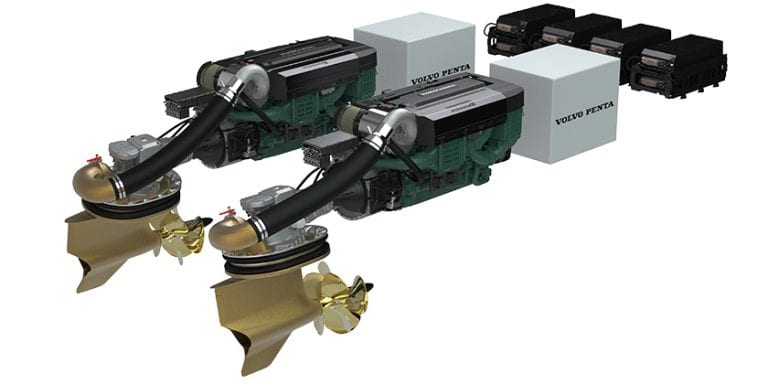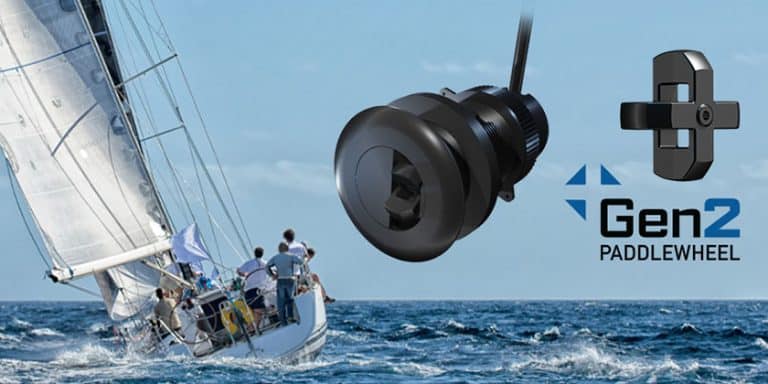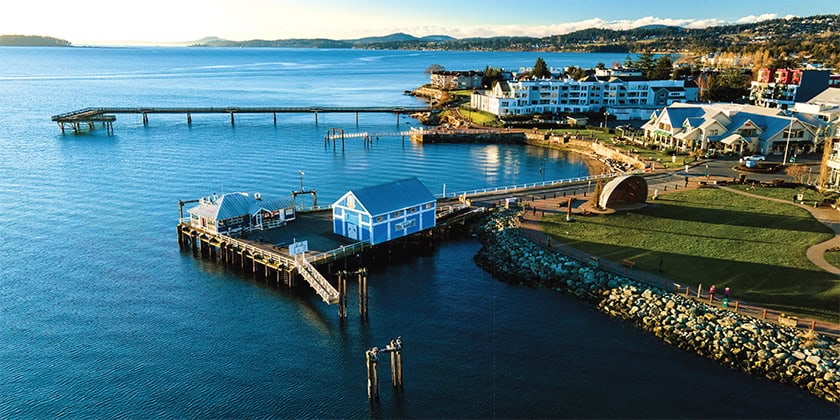Going iPad for Marine Navigation: Mounting, Protecting and Charging
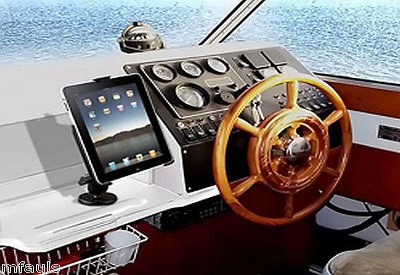
June 14, 2017
By: Owen Hurst
When iPads were first made there was likely little to no consideration for their use in personal marine navigation or that a way to protect an iPad from the elements of the open ocean would be necessary. Unprotected, an iPad can fairly easily get damaged around the house. Place it on a boat, exposed to the sun, possibly salty air and of course the fact that you are surrounded by any electronics worst nightmare, water, and the possibility of damage increases exponentially.
Question: Is it possible to mount, protect and charge your iPad during marine navigation.
Answer: Yes, but it often requires some creative thinking and typically purchasing separate accessories for each duty.
Mounting:
Any iPad user knows that seeing the screen outside on a sunny day can present difficulties, even with the brightness dialed all the way up. Seeing all the details on a chart while navigating on a sunny day is still not easy. Mounting your iPad, to the best of your ability, in a shaded location will help with this.
Further, iPads can quickly overheat and automatically shut off in direct sunlight, which of course will likely happen right when you need it the most. Mounting in the right location requires a versatile and trusted mounting system. And there are a number. Here are a few I recommend.
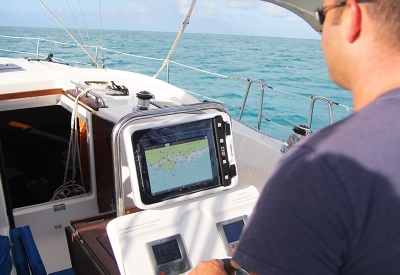 Overboard Canada has a waterproof iPad mini case boat mount that can be installed in various ways and has the added benefit of providing full protection in one system, but only for the iPad mini. Overboard Canada also has waterproof cases for all iPads. (Left image)
Overboard Canada has a waterproof iPad mini case boat mount that can be installed in various ways and has the added benefit of providing full protection in one system, but only for the iPad mini. Overboard Canada also has waterproof cases for all iPads. (Left image)
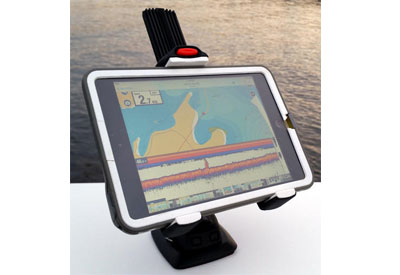
Scanstrut has a solid reputation for marine mounts and the Rokk mini is a versatile mount with the ability to secure your iPad, case or no case. With a wide range of mounting accessories Scanstrut lets you position your iPad just about anywhere on your boat and feel comfortable that it is safely held by the mounts locking mechanism. (Right image)
Ram Mounts have one system for the iPad mini and another for full size iPads and both can accept devices protected by heavy duty cases. While a durable mount it doesn’t have the same installation flexibility as the above-mentioned products. (Main article image)
If you are looking for a more finished look it is possible to install an iPad directly into the helm. To take this step you either need nerves of steel to make the precision cut-outs in your helm, or the safer option is to find a custom fabrication shop in your area. This option, when done right, looks fantastic and protects and charges you iPad all in one. However, it typically makes your iPad a permanent part of your helm, eliminating the option to use it as a mobile device.
And always remember to consider proximity to metallic and magnetic devices as your iPad is just as susceptible to magnetic variation as any other navigation tool. Therefore, magnetic charging mounts are a no-no for marine navigators.
Protecting:
There is a large market for iPad cases, and a wide variety available at just about any price point. But if you are planning to set sail with your iPad give it the best protection possible.
 Top of the list is the Lifeproof case. It is fully waterproof and can protect your iPad from jolts and potential drops during rough water. Lifeproof also makes mounts and a mounting cradle that can be used for marine applications. (Left image)
Top of the list is the Lifeproof case. It is fully waterproof and can protect your iPad from jolts and potential drops during rough water. Lifeproof also makes mounts and a mounting cradle that can be used for marine applications. (Left image)
 Other comparable cases are made by Catalyst, Antactical, Armor X, Gumdrop and Digital Marine among others. The trick is to make sure the case you choose will fit with the mounting option you select. (Right image, Armor X case)
Other comparable cases are made by Catalyst, Antactical, Armor X, Gumdrop and Digital Marine among others. The trick is to make sure the case you choose will fit with the mounting option you select. (Right image, Armor X case)
As mentioned the sun is an issue when on the water, and it is not always possible to mount your iPad in a fully shaded spot. Purchasing an anti-glare (AR) or matte screen protector can help on the bright days. There are a wide range of these screen protectors for sale online and in stores including high quality protectors from companies like 3M and Tech Armor.
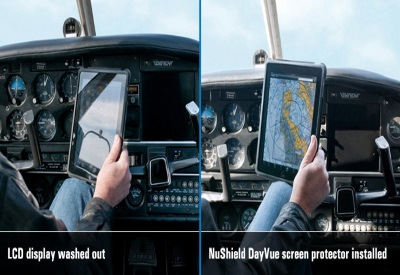 NuShield also offers a unique Dayvue screen that cancels reflected light rather than scattering it like standard anti-glare screen protectors.(Left image)
NuShield also offers a unique Dayvue screen that cancels reflected light rather than scattering it like standard anti-glare screen protectors.(Left image)
Although iPad backlighting and screen protectors have come a long way, visibility of the screen on a bright day is still more difficult than reading most traditional chartplotters and GPS units.
Charging:
iPad’s have a fairly substantial battery life, but a few hours of navigating with the screen brightness all the way up will quickly bring on the low battery warning.
There are plenty of 12V marine sockets (the old cigarette lighter socket) available that can be installed on top of your console or flush mounted into it. Then it is just a matter of plugging in a 12V iPad charger or getting a 12V USB Plug.
 However, a more reliable option is to directly wire in a charging cord by using a USB wiring harness or install a USB outlet. There are a variety of styles designed for marine use that can be flush mounted for a clean visual look and often provide multiple USB outlets. I like the look of the Victory AA01433 USB socket with built in volt meter (Right image). A quick Google search will return hundreds of options for these products at a variety of price points.
However, a more reliable option is to directly wire in a charging cord by using a USB wiring harness or install a USB outlet. There are a variety of styles designed for marine use that can be flush mounted for a clean visual look and often provide multiple USB outlets. I like the look of the Victory AA01433 USB socket with built in volt meter (Right image). A quick Google search will return hundreds of options for these products at a variety of price points.
In conclusion, it is possible to mount, protect and charge your iPad during marine navigation, but by no means can one simply openly mount an iPad like a chartplotter. Your iPad itself is not as durable or easy to see on bright days and requires a little thought before sticking it on your console and casting your lines.
Again, I give thanks to the numerous readers that have submitted question and opinions. In the next installment, we will take a more in depth look at the use of iPads in comparison to traditional chartplotters.
Canadian Yachting recommends that you carry and can use hard copy marine charts in the event of electronic failure.
About the Author
 Owen was born and raised in Midland, Ontario on the shores of Georgian Bay. He has been boating and navigating ever since and has experience as a paddling instructor, rescue boat operator, and a passenger vessel operator for Parks Canada. He obtained his Master’s degree from McMaster University and holds SVOP and MedA3 certificates from Transport Canada.
Owen was born and raised in Midland, Ontario on the shores of Georgian Bay. He has been boating and navigating ever since and has experience as a paddling instructor, rescue boat operator, and a passenger vessel operator for Parks Canada. He obtained his Master’s degree from McMaster University and holds SVOP and MedA3 certificates from Transport Canada.


